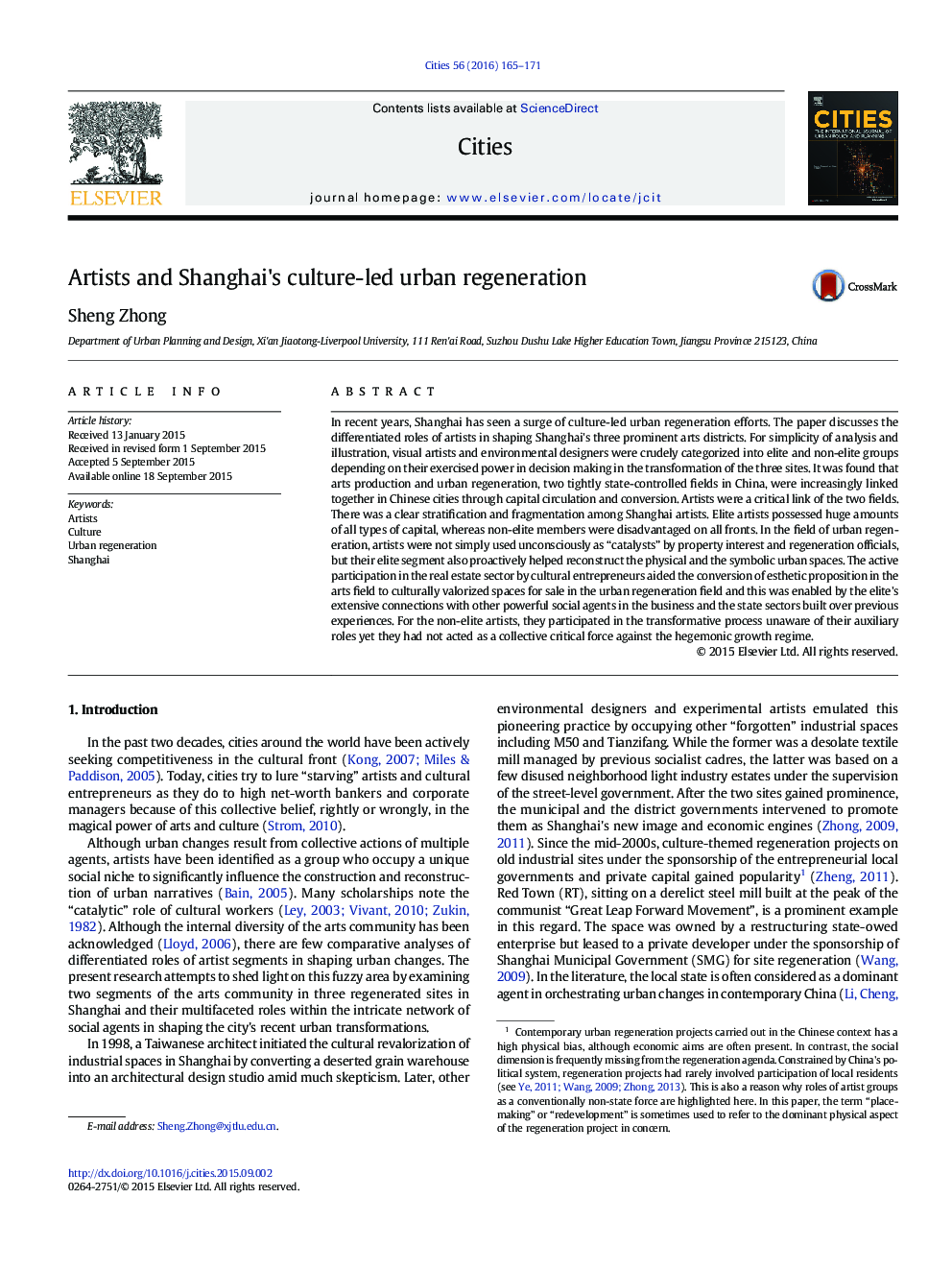| کد مقاله | کد نشریه | سال انتشار | مقاله انگلیسی | نسخه تمام متن |
|---|---|---|---|---|
| 1008180 | 1482340 | 2016 | 7 صفحه PDF | دانلود رایگان |
• There was a clear stratification and fragmentation among Shanghai artists.
• Arts production and urban regeneration were linked together in Chinese cities through capital circulation and conversion.
• Elite artists possessed huge amounts of all types of capital and played proactive roles in shaping Shanghai's urban space.
• The elite had extensive connections with other powerful social agents in the business and the state sectors.
• The non-elite artists unconsciously aided Shanghai’s urban transformations yet failed to act as a collective critical force.
In recent years, Shanghai has seen a surge of culture-led urban regeneration efforts. The paper discusses the differentiated roles of artists in shaping Shanghai's three prominent arts districts. For simplicity of analysis and illustration, visual artists and environmental designers were crudely categorized into elite and non-elite groups depending on their exercised power in decision making in the transformation of the three sites. It was found that arts production and urban regeneration, two tightly state-controlled fields in China, were increasingly linked together in Chinese cities through capital circulation and conversion. Artists were a critical link of the two fields. There was a clear stratification and fragmentation among Shanghai artists. Elite artists possessed huge amounts of all types of capital, whereas non-elite members were disadvantaged on all fronts. In the field of urban regeneration, artists were not simply used unconsciously as “catalysts” by property interest and regeneration officials, but their elite segment also proactively helped reconstruct the physical and the symbolic urban spaces. The active participation in the real estate sector by cultural entrepreneurs aided the conversion of esthetic proposition in the arts field to culturally valorized spaces for sale in the urban regeneration field and this was enabled by the elite's extensive connections with other powerful social agents in the business and the state sectors built over previous experiences. For the non-elite artists, they participated in the transformative process unaware of their auxiliary roles yet they had not acted as a collective critical force against the hegemonic growth regime.
Journal: Cities - Volume 56, July 2016, Pages 165–171
